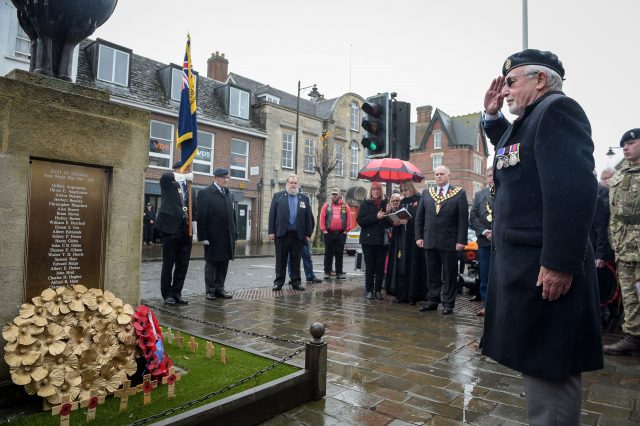MILLIONS of people have fallen silent on Armistice Day to remember those who died in the nation’s wars and conflicts.
Events have been held across the country to mark the 99th anniversary of the end of the First World War.
In London, Big Ben, which has not tolled since vital repairs began in August, chimed at the stroke of 11am marking the start of a two-minute silence on Saturday.
There has also been a service at the Cenotaph in Whitehall, while mourners and dignitaries gathered at the National Memorial Arboretum in Staffordshire, led by the Duke of Gloucester.
At the going down of the sun and in the morning. We will remember them. #TwoMinuteSilence #Armisticeday pic.twitter.com/ih4bUlZNHz
— Royal British Legion (@PoppyLegion) November 11, 2017
Our Flanders poem installation has reached its final destination at the Menin Gate in Ypres. Read more https://t.co/7HkbVcirWq pic.twitter.com/tPPrNrSYQx
— Royal British Legion (@PoppyLegion) November 11, 2017
Later, the Queen will be joined by members of the Royal Family at the Royal Festival of Remembrance at the Royal Albert Hall.
This year the event will mark the centenaries of women’s service in the regular armed forces, the Battle of Passchendaele, the creation of the Commonwealth War Graves Commission and the 100th birthday of forces’ sweetheart Dame Vera Lynn.
It will also commemorate the 75th anniversary of the Battle of El Alamein, a turning point for Britain and the Allies in the Second World War, and the creation of the RAF Regiment.
Other royals attending the service on Saturday include the Duke of Edinburgh, the Prince of Wales, the Duchess of Cornwall, and the Duchess of Cambridge, who is pregnant with her third child.
Earlier, across the country, services took place in places like Brighton, East Sussex, where heroes who died while searching for beach landmines were remembered from 452ft (138 metres) in the air.
Veterans, military personnel and relatives marked the silence, taking in views from the top of the world’s tallest moving observation tower – the British Airways i360.
At the National Memorial Arboretum, veterans of all ages gathered in a visual reminder of the UK’s near-constant involvement in conflicts beyond the end of the Second World War, including Iraq and Afghanistan.
Among those remembering, 99-year-old Les Cherrington, of the Staffordshire Yeomanry Queen’s Own Royal Regiment, who was the sole survivor from his tank crew in the North African desert in 1943.
Mr Cherrington’s Sherman tank was left a flaming wreck by a German field gun, but he managed to clamber free despite being badly burned and shrapnel nearly severing his left arm.
After almost bleeding to death overnight in a slit trench, he was believed to be among the dead by a New Zealand soldier who came across him and only realised his mistake when Les shouted “water!”
On the Brighton beach front, mourners gathered in front of the West Pier in memory of the fallen and those men and women like Captain Ken Revis, of the Royal Engineers, who lost his sight during the Second World War while defusing mines.
While he survived, thousands of others did not.
Paul Hull, a Brighton and Hove City Council licensing officer who retired from the Royal Engineers Bomb Disposal Unit in 1985 after seven years of service, decided to take the trip up the observation tower to remember Mr Revis.
In September 1943, Mr Revis was asked to “delouse” the two piers in Brighton, but having defused six mines, he was blown up when 13 went off – and claimed his sight.
Despite this, he went on to live a full life with the support of his wife Jo and became a representative for St Dunstan’s charity for the blind in India, qualified as a solicitor and pursued his other interests until he died in 2002 aged 84.

Enjoy the convenience of having The Sunday Post delivered as a digital ePaper straight to your smartphone, tablet or computer.
Subscribe for only £5.49 a month and enjoy all the benefits of the printed paper as a digital replica.
Subscribe
